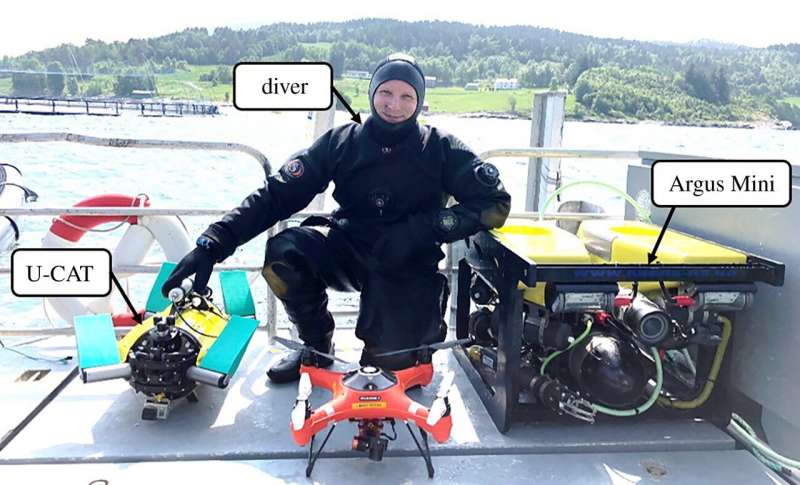March 13, 2020 report
Study shows salmon in fish farms prefer to be monitored by small robot

A team of researchers from the Norwegian University of Science and Technology, Tallinn University of Technology and Estonia University of Life Sciences has found evidence that suggests salmon living in fish farms prefer to be monitored by a small robot rather than a large one or a human being. In their paper published in the journal Royal Society Open Science, the group describes experiments they carried out in Norway with sea cages filled with captive fish, and what they found.
As the world's population rises, scientists and food experts look for ways to obtain more food using fewer resources—and to do it in Earth-friendly ways. One of those ways is aquaculture, also known as fish farming. Fish are bred and raised in water similar to their natural environment, but with barriers in place to prevent them from leaving. One type of aquaculture is salmon farming. It involves keeping the fish in cages made out of nets situated along coastlines, typically in protected areas such as sheltered bays or fjords.
Just like agriculture, aquaculture requires farmers to enter the growing area to see and measure how things are going. On land, it is a simple matter of walking or riding a tractor into the fields. With fish farming, people have to don wetsuits and dive down into the cages to see how things are going. But prior research has suggested the presence of a person swimming around in their cages can result in stress for the fish, as evidenced by salmon attempting to keep their distance from the intruder and flapping their tails. In this new effort, the researchers sought to find out if captive salmon might be less bothered by robots.
To find out, the researchers set up undersea cameras to study a cage holding approximately 188,000 salmon. They then sent in a person, followed by a conventional undersea robot (an Argus Mini), and then a small robot called U-CAT, which was powered by fins.
In studying the film, the researchers found the fish were most bothered by the human diver, followed by the Argus Mini and then the U-CAT. They note that happy fish tend to be healthier, leading to higher yields.
More information: M. Kruusmaa et al. Salmon behavioural response to robots in an aquaculture sea cage, Royal Society Open Science (2020). DOI: 10.1098/rsos.191220
Journal information: Royal Society Open Science
© 2020 Science X Network




















